Whynter ARC-14S Review
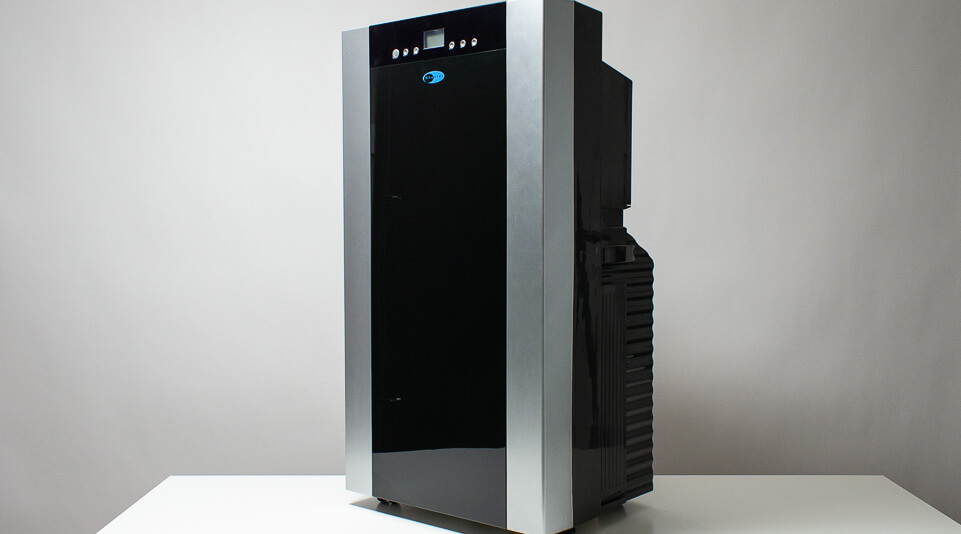
Initial Analysis
Cooling Capacity
The Whynter ARC-14S is marketed and sold as a 14,000 BTU portable air conditioner.
But it’s actual cooling capacity in the real world is much less.
It’s less for three primary reasons:
1. the unit has multiple ducts - one pulls in warm air from the outdoors and the other exhausts hot air to the outdoors. The ducts are “sealed” but they’re very large (about 5 inches in diameter) and made of a thin plastic material.
The end result is that both of these ducts radiate heat back into the room as the ARC-14S works hard to cool it. This addition of heat to the room via the unit’s ducting causes the actual cooling capacity to be less than 14,000 BTUs.
2. the unit’s actual cooling capacity is also lower than its specified capacity because of infiltration air.
Infiltration air is warm outdoor air that gets pulled into the conditioned room due to pressure differences between the outdoor air and the indoor air.
The ARC-14S creates these pressure differences as it exhausts air out of the room. Since it’s a dual hose unit it does pull in almost as much air as it exhausts – but not exactly the same amount of air. The unit also pulls in air from the conditioned room through a grille on the back of the unit. All of this amounts to a pressure difference – less of a difference than what a single hose unit would create – but a difference nonetheless.
And this pressure difference causes warm outdoor air to get pulled into the room which reduces the unit’s actual cooling capacity.
3. The last reason why the unit’s actual cooling capacity is much less than 14,000 BTU has to do with the conditions under which it is tested. Portable AC units tend to perform much better – have a better cooling capacity – when outdoor temperatures are lower. Conversely, they perform worse when outdoor temperatures are high.
Under the old standard for testing portable AC units, the outdoor temperature at which they were tested was relatively mild. Under a new standard, called seasonally adjusted cooling capacity (SACC), outdoor test temperatures are higher – more representative of real world applications.
SACC also accounts for heat added by ducting and infiltration air.
The Whynter ARC-14S we tested for review had a SACC of only 8,900 BTUs.
This means that accounting for
- heat added by ducting
- heat added by infiltration air
- conditions (outdoor temperatures) that are more representative of real world applications
Causes this unit’s cooling capacity to drop by more than 5,000 BTUs!
How does this compare to the competition?
In the 14,000 BTU size class, SACC varies from 7,700 BTUs all the way up to 10,000 BTUs.
The most efficient “14,000 BTU” unit, the Midea Duo, has an actual cooling capacity (SACC) of 12,000 BTUs. This is still a substantial drop off but not quite as egregious as that of the Whynter ARC-14S.
The least efficient units have their BTUs almost cut in half. The Black + Decker BPACT14WT, for example, is marketed and sold as a 14,000 BTU portable air conditioner but it’s actual cooling capacity (SACC) is only 7,700 BTUs.
Portable air conditioners in other size classes see a similar drop off.
The most efficient “12,000 BTU” unit has a SACC of only 10,000 BTUs.
The most efficient “10,000 BTU” unit has a SACC of only 7,000 BTUs.
Energy Efficiency
The ARC-14S we tested for review drew 1250 watts of power operating at maximum cooling capacity. This is only slightly less than the power draw of most other 14,000 BTU units, which averages to about 1300 watts. The Midea Duo, for example, drew exactly 1300 watts of power.
Which model is more energy efficient though?
Under the old standard for calculating energy efficiency – using EER (energy efficiency ratio) – the Whynter would be more energy efficient.
EER = BTUs/watts
Thus, the Whynter would have an EER of 14,000/1250 = 11.2.
The Midea Duo would have an EER of 14,000/1300 = 10.8.
The Whynter has the higher ratio so it would be appear to have the higher energy efficiency.
But consider for a moment our discussion earlier regarding claimed BTUs and actual BTUs. We showed how SACC BTUs are much more representative of actual cooling capacity than claimed BTUs.
So, wouldn’t using SACC BTUs be more representative of actual energy efficiency?
Yes, it certainly would. Even though the conventional way for calculating energy efficiency – EER – involves using claimed BTUs.
Using SACC instead of claimed BTUs we get
8,900/1250 = 7.1 for the Whynter ARC-14S and
12,000/1300 = 9.2 for the Midea Duo.
This is the exact opposite result of what we get using EER. The Midea Duo now appears to be the more efficient unit. And in a real world application, it would be the more energy efficient unit.
Pros and Cons
Pros
- Price - this is usually one of the least expensive 14,000 BTU units on the market.
- Comes with a few extras that no other 14,000 BTU unit comes with - a. caps for the holes in its window bracket (allows you to keep the bracket installed even when the unit’s hoses are not connected) and b. a cover for storage
Cons
- Considerably lower SACC than top rated 14,000 BTU units like the Midea Duo.
- Considerably lower energy efficiency than top rated units.
- Dual hoses – two times as many hoses to deal with as a single hose unit during installation; because there are two holes in the window bracket instead of one there’s less room for adjustment of the length of the window bracket using extensions (see window kit in slideshow below)
- One of the largest and heaviest portable AC units on the market Large – a shade under 3 ft. tall. Most other units are only about 2.5 ft. tall. Heavy – over 80 lb. Most other portable AC units weigh in the 50 to 70 lb. range. Most other 14,000 BTU units weigh in the 60, low 70 lb. range.
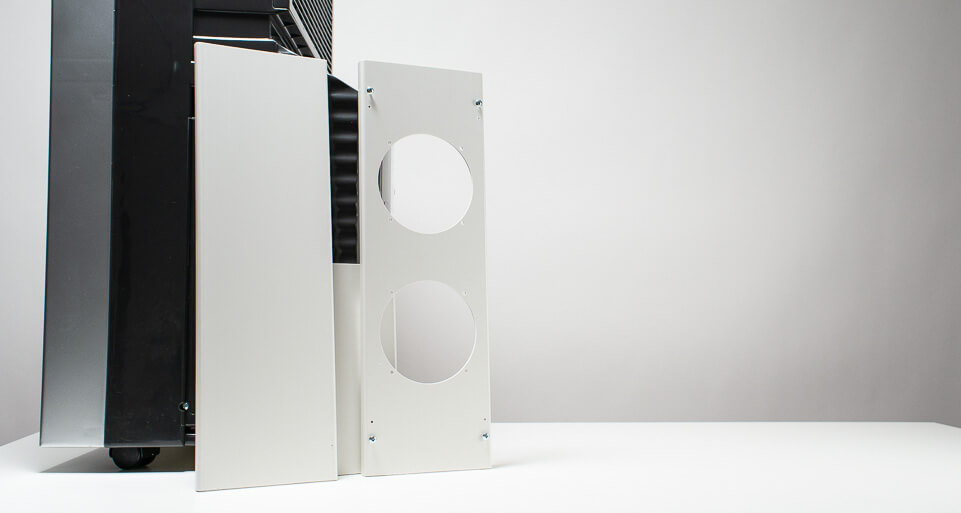
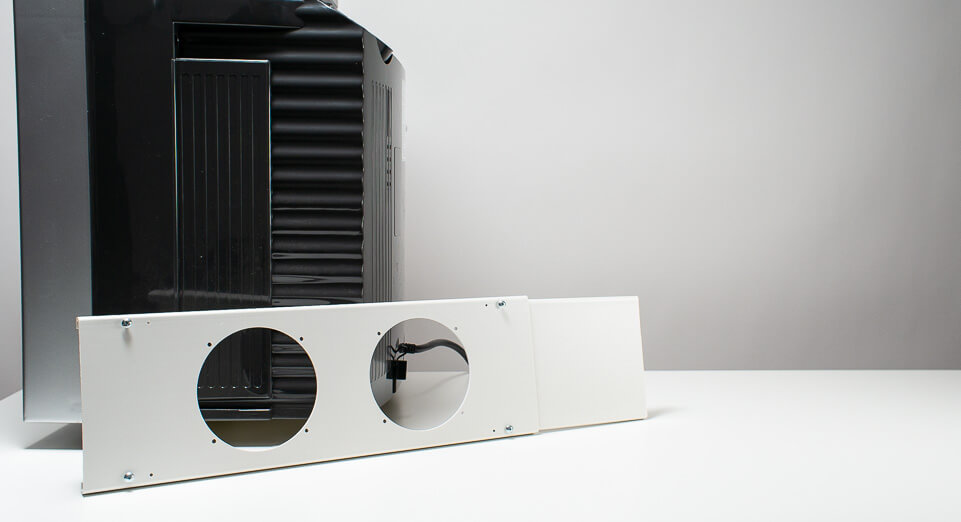
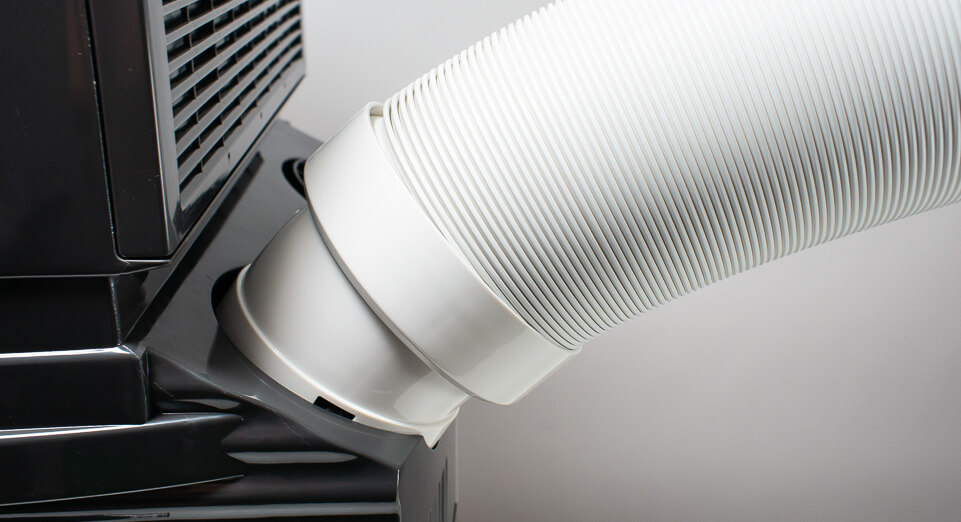
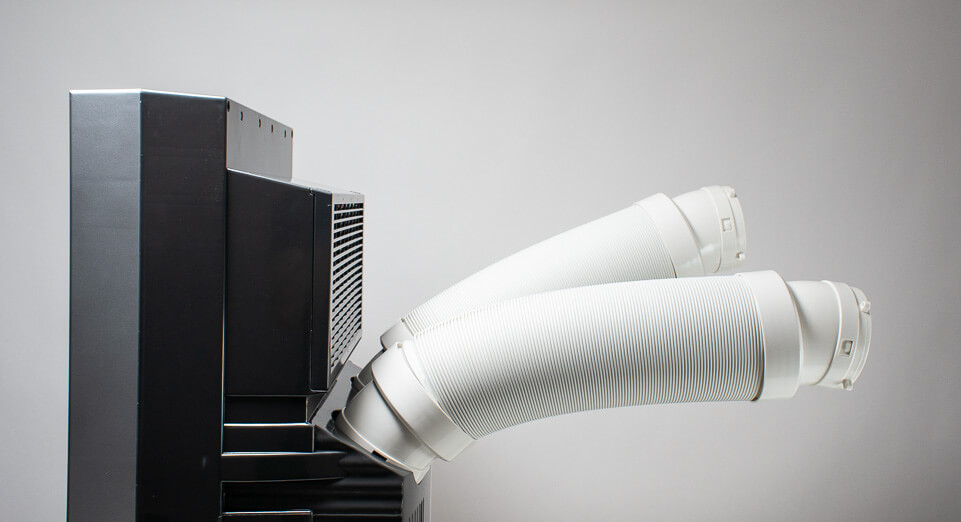
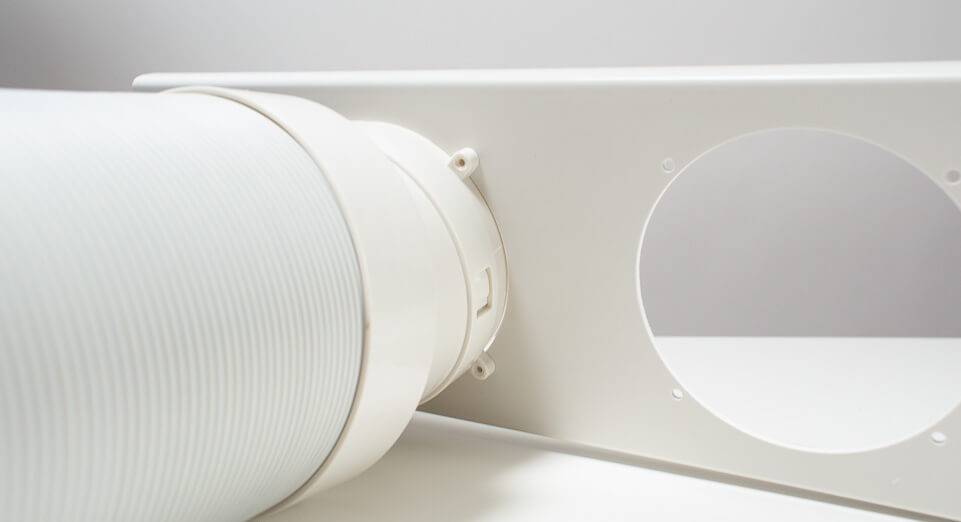
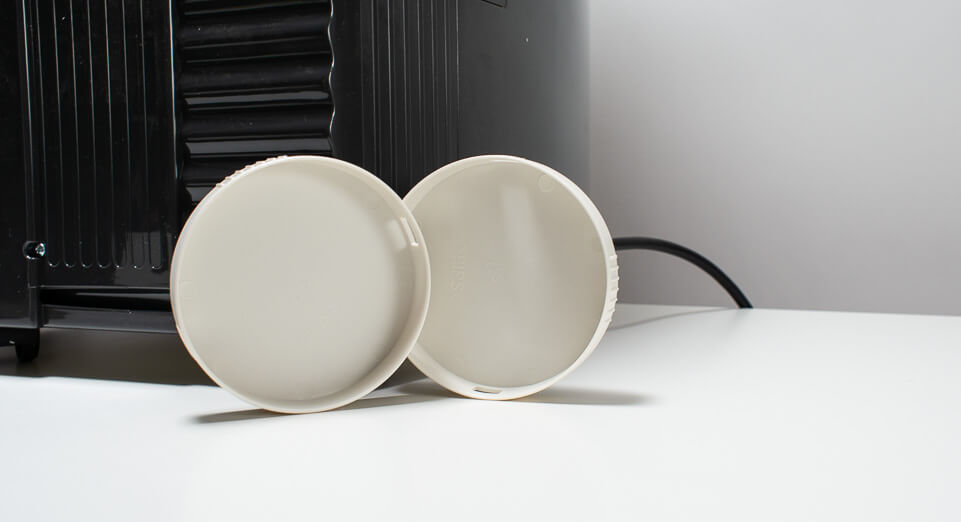
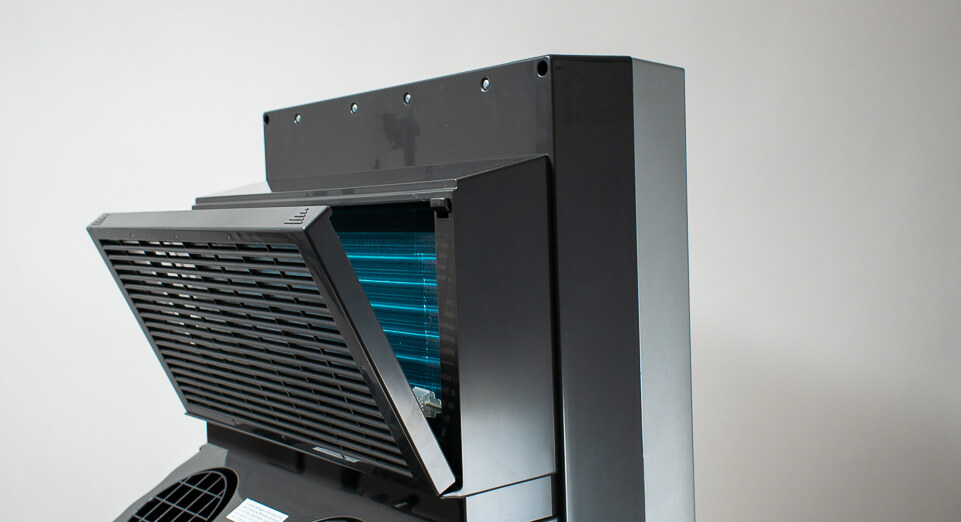
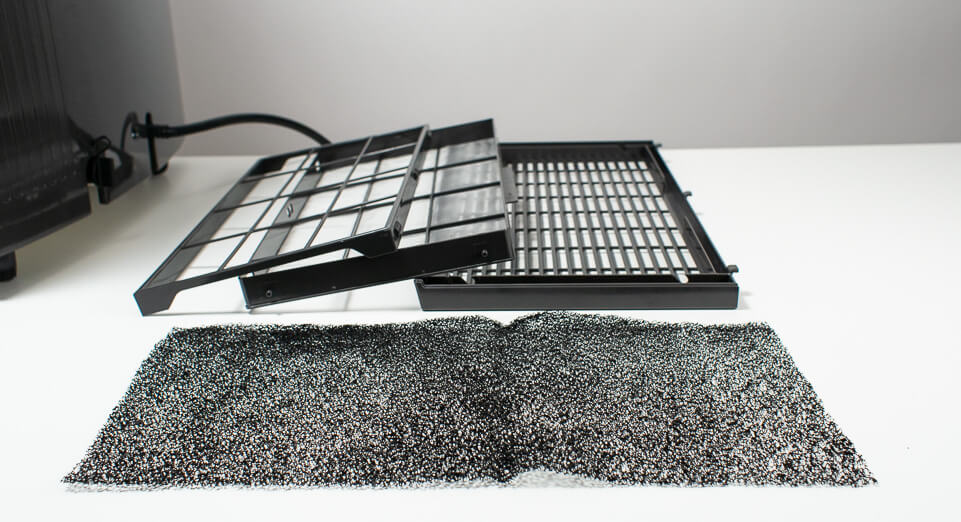
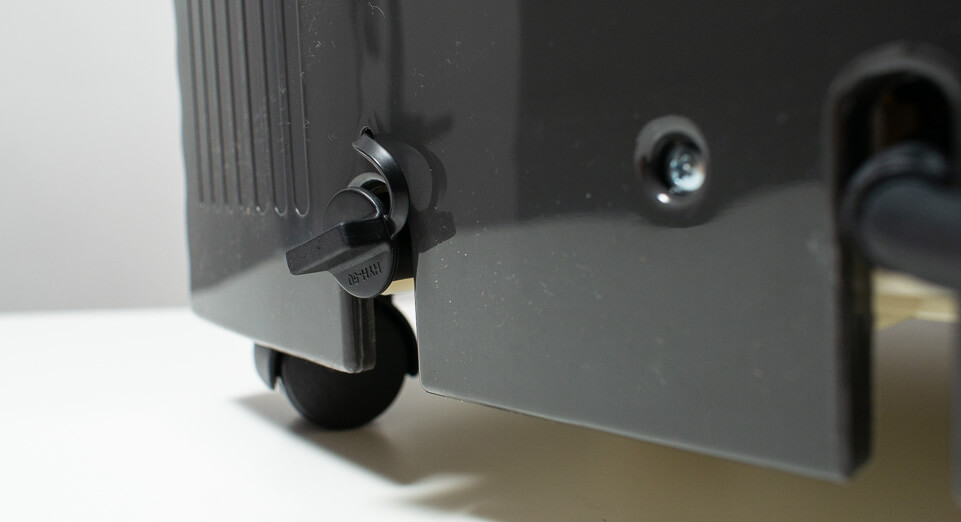
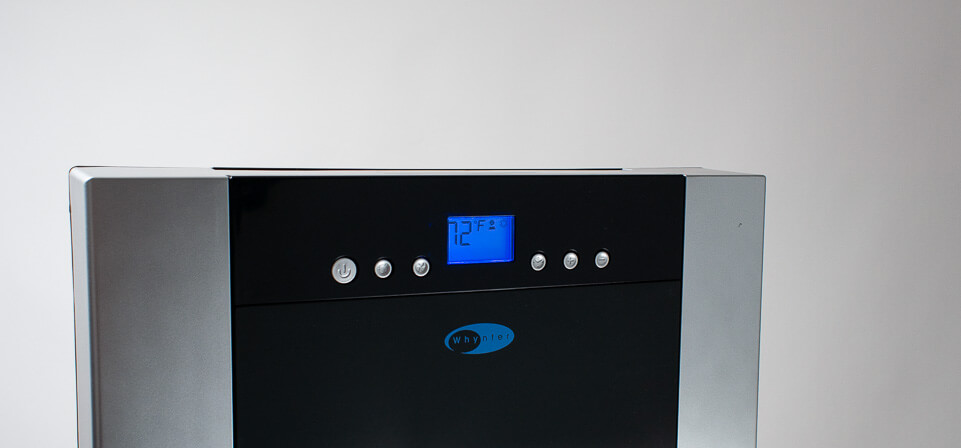
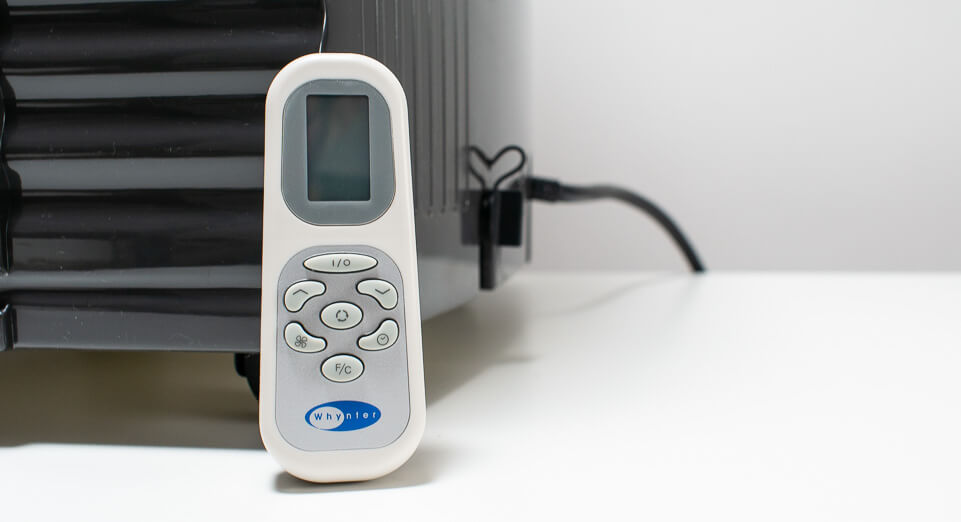
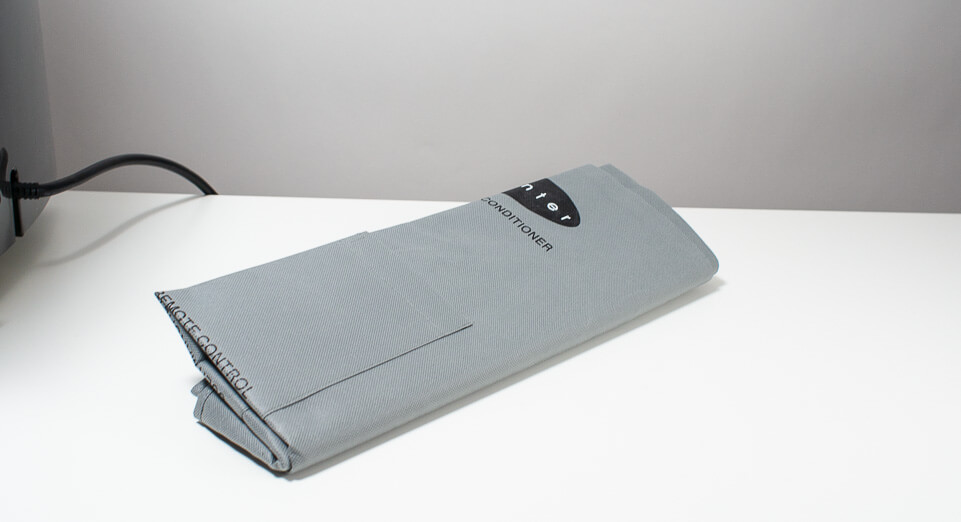
Conclusion
Compared to top rated units in the category like the Midea Duo, the ARC-14S has
- Lower SACC
- Lower energy efficiency
- Lower build quality
Like the Midea Duo,
- It has approximately the same noise output
- Has just about the same modes/feature set
- Also comes with a remote
It's important to note that we tested and originally wrote this review for the 2019 version of the ARC-14S. The latest version of this model now has a SACC of 9,500 BTUs and a power draw of 1300 watts.
But even this latest version still has substantially less cooling capacity (9,500 SACC vs 12,000 SACC for the Duo) and energy efficiency (a 7.3 SACC/watt ratio vs a 9.2 SACC/watt ratio for the Duo) than the Midea Duo.
On the positive side of things, this latest version of the ARC-14S does now meet our 9,000 SACC BTU requirement for portable AC units.
Our own testing showed a quantum leap in performance going from a sub 9,000 SACC BTU unit to a 9,000+ SACC BTU unit. Higher SACC (9,000+ BTU) units cooled much faster and to lower temperatures even in a relatively small test environment – only 150 sq. ft.
The ARC-14S we tested in 2019 with a SACC of 8,900 BTUs didn't meet this 9,000 SACC BTU threshold (and it showed in our testing), while the latest version of this model now does.
So, while we would have generally NOT recommended the ARC-14S before, it now is a reasonable choice even for
- Large rooms and/or
- Difficult to cool rooms (second story, many windows, high outdoor temperatures, etc.)
Overall though, the Midea Duo is the far better portable air conditioner. We would only recommend the ARC-14S over the Duo if the Duo isn't available (the best portable AC units often go out of stock during the peak of the summer season) or if you can find the ARC-14S at a substantial discount (i.e. for much less than its usual retail price of approx. $500).
Additional specifications and notes
Window Kit
Window Kit Included Parts – primary window bracket, long extension, short extension
8x screws for 2x grates ("fixtures") that screw into window bracket and fit into hose connectors
2x "covers" that fit into fixtures when hose is not connected to window bracket
Window Kit Adjustment – 2x screws on either side of primary bracket that attach it to either extension
Window Kit Min - 19 7/8" (20” spec)
Window Kit Max – 46 ¼” (47” spec) with long extension on one side and short extension on other side and with screws holding three pieces together (could go longer with no screw attachment)
With no screw attachment you can add about 1.5” on each side so 49 ¼” if you DIY it
Weather stripping included – none
Hose Connectors
End Adapters – not pre-installed but they screwed in very easily (turn hose connector counterclockwise onto end of hose)
AC Side Hose Connection – just press in – clicks in on both sides. Rotate end and pull to remove
Window Kit Side Hose Connection – with grates already screwed into window bracket, just press end of hose into the grate (clicks in on two sides)
Hose Min/Max – 23.5" to 66"
Control
Modes – cool, dry, fan
Set temp range - 61 to 89° F
Fan speeds - 3
Timer - yes, 1 to 24 hr in 1 hr increments – to set press timer button and then plus minus buttons
Lights turn off - no
Condensate
Dehumidifier mode pints/day – 101 pints/day
Drainage options - manual drainage only (single plug at back bottom)
Drain hose – none included
Filters
Top filter (evaporator) - only unit tested with carbon filter Carbon filter leaves residue everywhere when taken out of plastic.
Regular grille and air filter is a little bit wonky but fits together in only one way and wasn't much of an issue to remove/replace.
However, when trying to add carbon filter to the equation, it gets even more tricky to put everything together.
Our recommendation – don’t use the carbon filter – it needs to be replaced at cost (cannot simply be cleaned) and it has minimal impact (supposed to reduce odors/VOCs but you can buy an air purifier separately for that purpose)
Bottom filter (condenser) - no filter for condenser with air coming from outside with only plastic grate – intake filter sold separately.
Add a Comment
Have a question or comment? Let us know below.

Comments (2)
FYI. The intake hose installation is optional. I ended up not installing it and let the intake suck in the air from the room instead of the outside.
There is no pressure difference because there are two ducts.
Single duct machine pull air into the dwelling through all doorways and windows, due to the vacuum created by blowing the hot air out through the single duct.
If you feel that the machines outgoing duct is too hot, you can always insulate it. Also the duct on the single duct machine gets hot as well.